Wildlife enthusiasts typically visit wildlife sanctuaries and national parks to observe animals in their natural habitats. However, I believe there should be no strict separation between humans and wildlife. We all share this world and have the right to coexist, especially wild animals that rely on specific environments to thrive. Unlike humans, they don’t alter their surroundings to suit their needs; instead, they adapt to their habitats. While it’s true that we can’t peacefully coexist with our natural predators, we can certainly live alongside creatures like frogs, birds, and butterflies.
In my blog, I often write about places that support wildlife, and in this case, I want to highlight a small village that may not typically be considered a wildlife habitat. Many of us might pass through such a village without stopping to appreciate the natural surroundings. At first glance, Alwarkurichi may seem like just another village in Tamil Nadu. However, Vinod and I had the opportunity to spend a night there, and we had some remarkable and unique wildlife experiences.
Bat cave in Tamilnadu
We concluded our bird survey ahead of schedule, giving us the opportunity to visit Alwarkurichi in the company of Dr. Thanigaivel, a friend with a keen interest in the nocturnal world. He guided us to a small cave atop a hillock, where we were greeted by the sight of hundreds of bats. It marked the first time that Vinod and I had ever encountered a genuine bat cave. However, due to their screeching noises and the strong, unpleasant odor, we could only spend a few minutes inside, despite the fascinating spectacle of bats constantly shifting their positions.
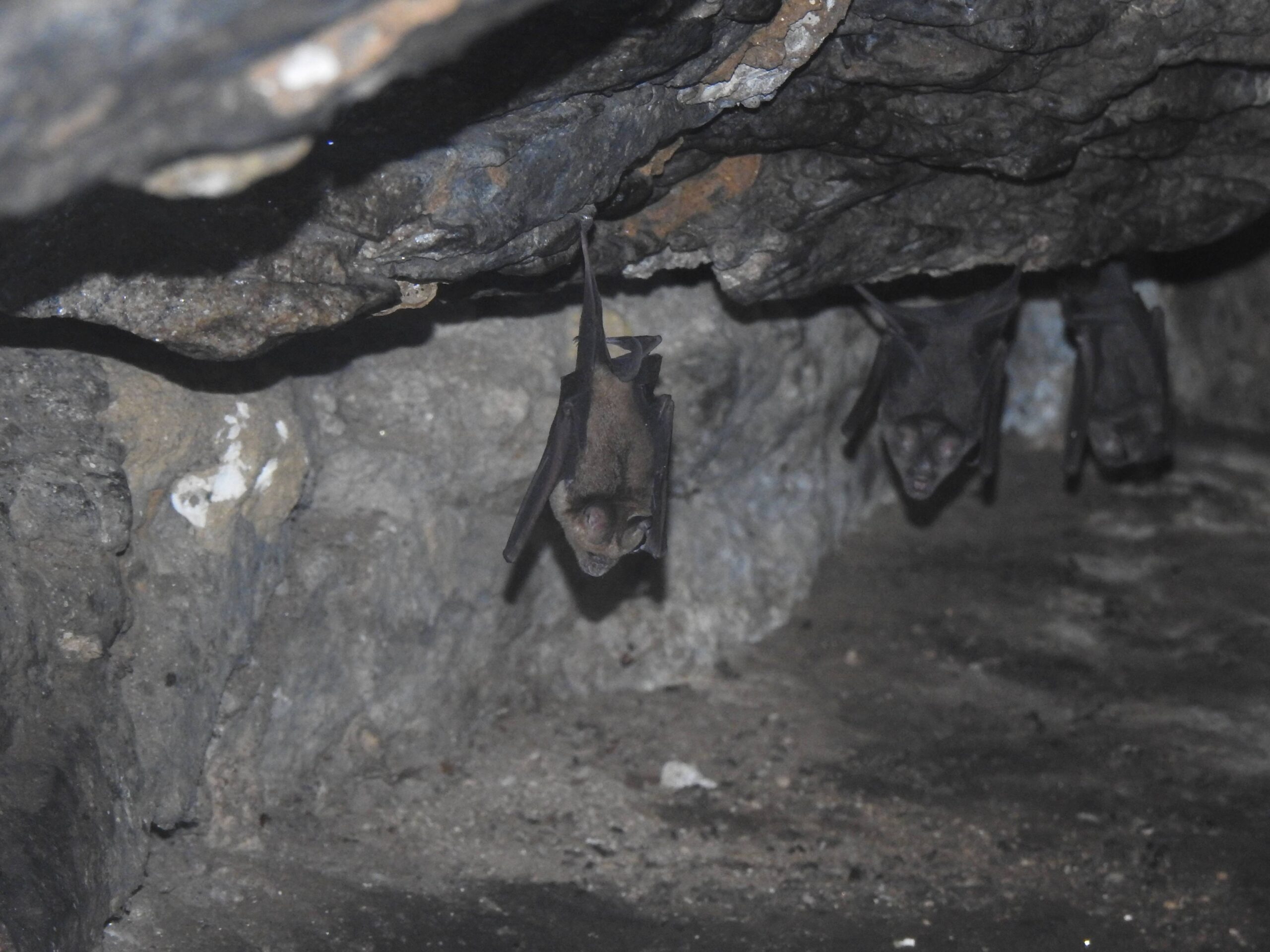
To our surprise, we also noticed an elderly man living in the cave, who had been exiled from the village. This starkly contrasted with the fictional image of Batman and served as a poignant reminder of the real-life challenges faced by those who share their living spaces with bats.
We paid a visit to a pond in Alwarkurichi, and the path encircling the pond was adorned with lush plant life. An impressive banyan tree added to the picturesque scene. With the Western Ghats mountain range in the background, we sat and marveled at the sight of hundreds of turtle doves congregating around the pond. As dusk settled in, water birds gracefully made their way back to their nests, creating a truly delightful spectacle of birds in their natural environment.
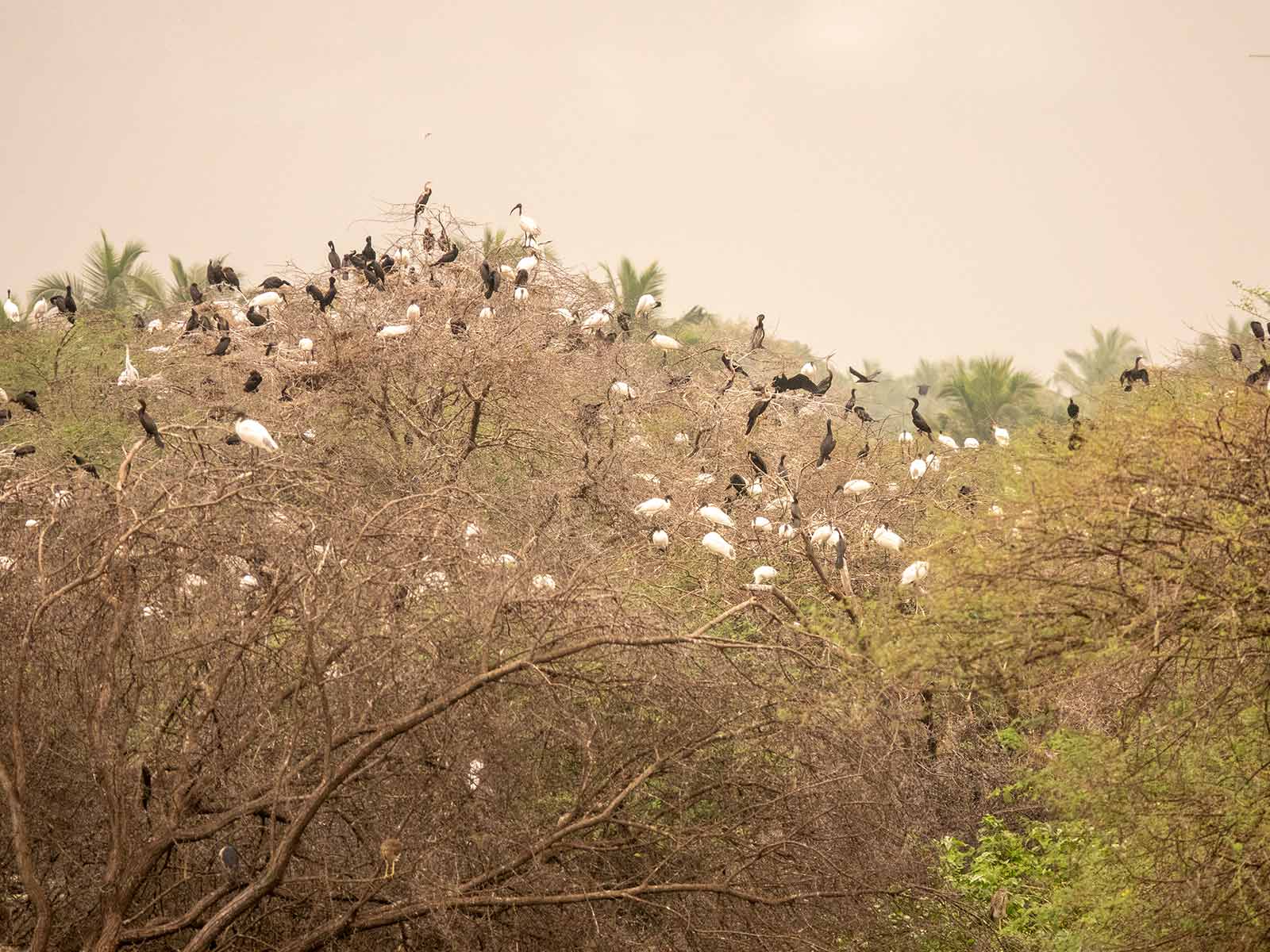
What made this experience particularly enjoyable was the villagers’ dedication to maintaining the pond and supporting the birdlife, which was in stark contrast to some other villages where birds were not as welcome. We were happy to witness a flock of Baya weavers joyfully flitting around the cattails along the pond’s edges. It was one of those evenings that left a lasting impression on me. A significant part of that pleasant memory was the absence of any safety concerns while sitting on the pond’s embankment, allowing us to fully immerse ourselves in the beauty of the birds and the sunset.


Typically, such places are frequented by drinkers in India, but in this village, thanks to the villagers’ commitment to preserving the wildlife habitat, there was not a drunkard in sight, and there were no broken bottles either.
As the daylight dimmed, we made our way to a small grassy area and rocky terrain. It was there that Thanigaivel quickly identified a Brown Fish-Owl, which at first glance, we had mistaken for an Eagle owl. Before long, we began to hear the distinct calls of nightjars and spotted these well-camouflaged birds perched on the rocks. On a nearby palm tree, we were treated to the sight of beautiful Spotted owlets.
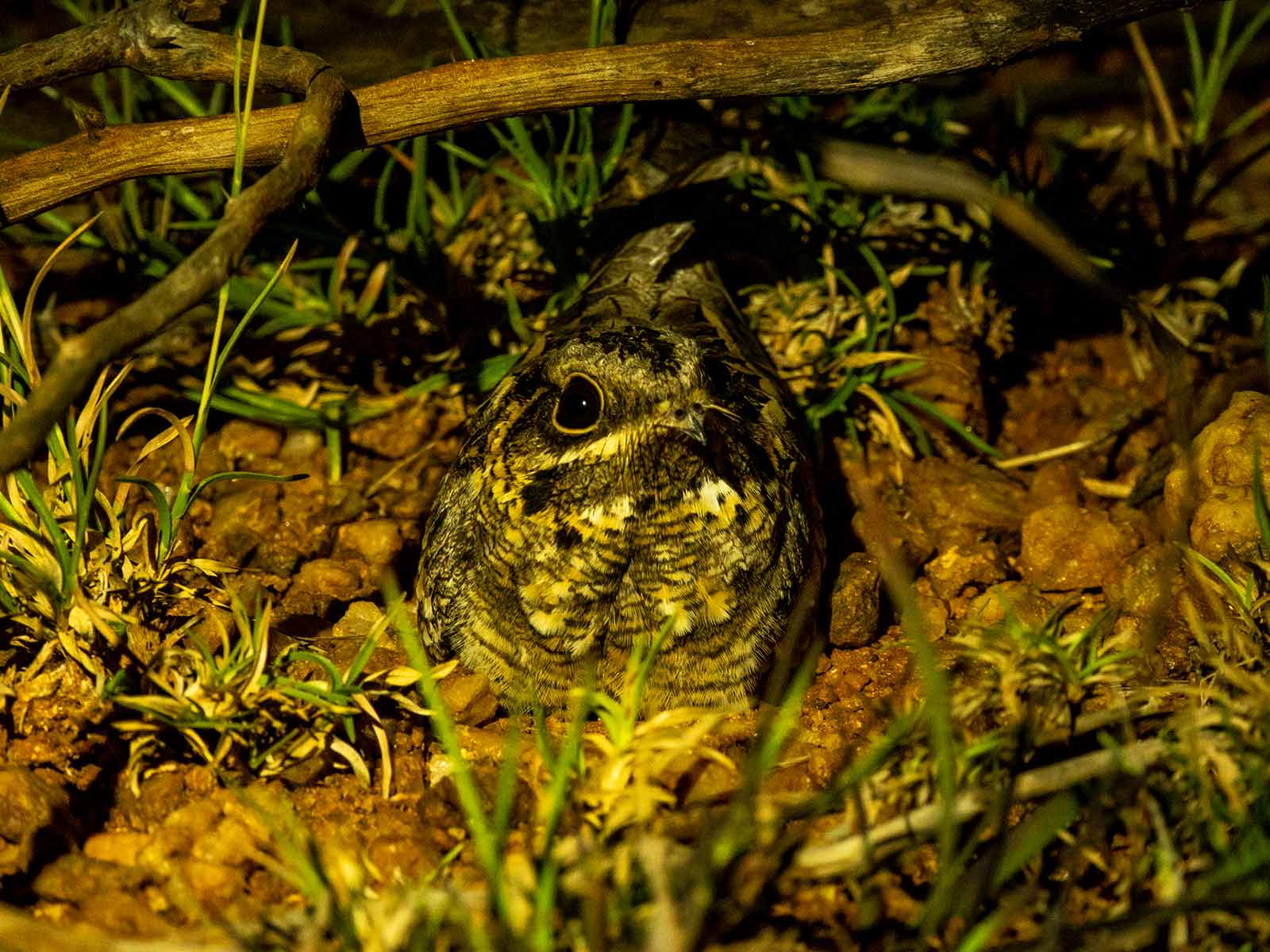
Our attention was then drawn to some movement near a grassy patch, and to our surprise, we spotted a Jungle cat. Vinod and I often playfully point out cats living on the forest’s fringes and claim they are jungle cats, but this time, it was the real deal. It marked a first-time encounter for me, although Vinod had previously spotted one in the Puthalam salt pans a few years ago.
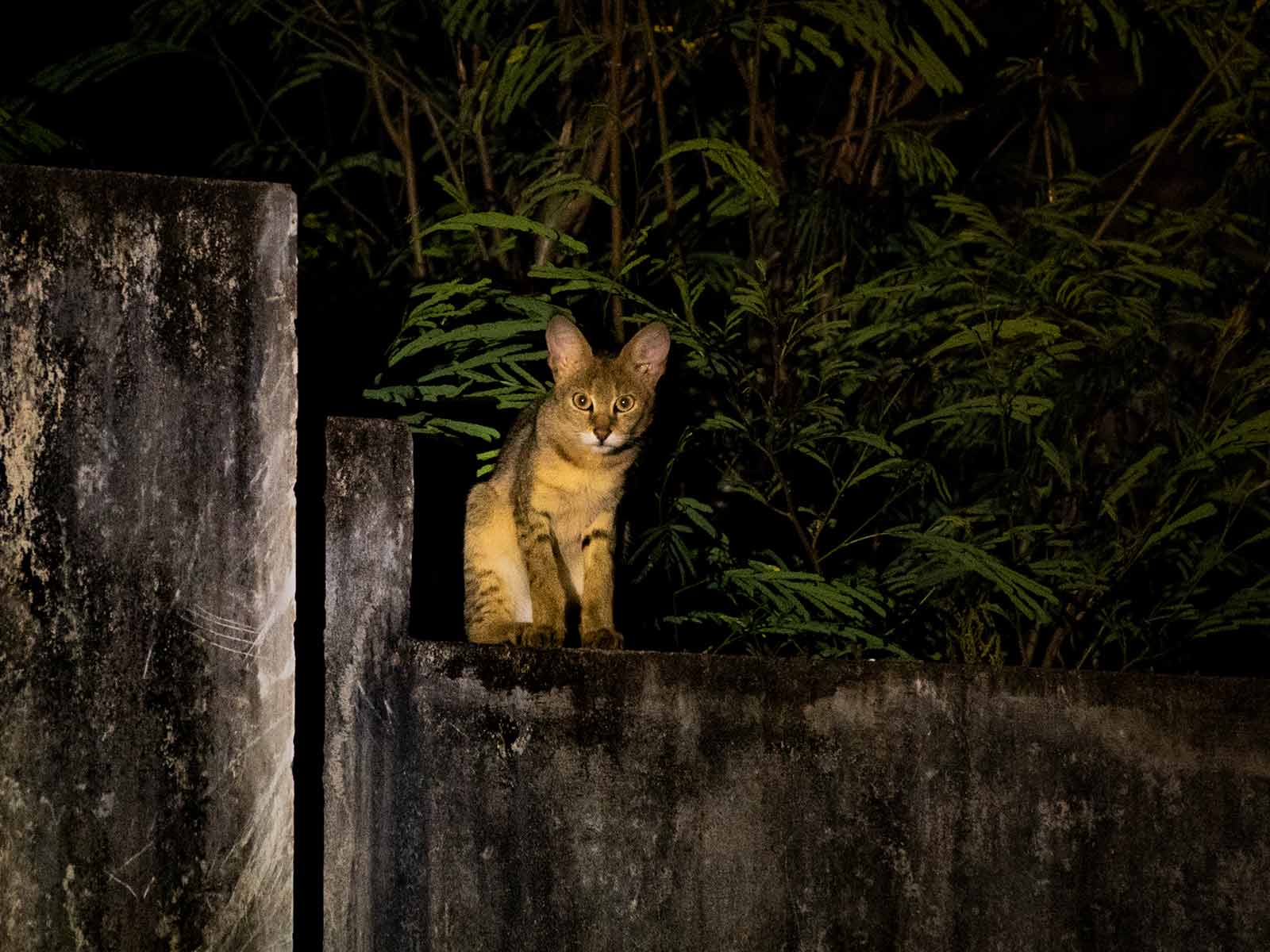
I was filled with excitement as I ventured out into those open patches at night. To my delight, the night-blooming barlerias were proudly displaying their long white blossoms. Sitting on a rock, we took in the beauty of our surroundings and spent a wonderful time there. As our journey neared its end, just when we thought it was coming to a close, Thanigaivel made an exciting sighting: the Marbled balloon frog. I had recently heard about this frog and was eager to see it when the opportunity arose. I never expected to encounter this beautiful frog so soon.
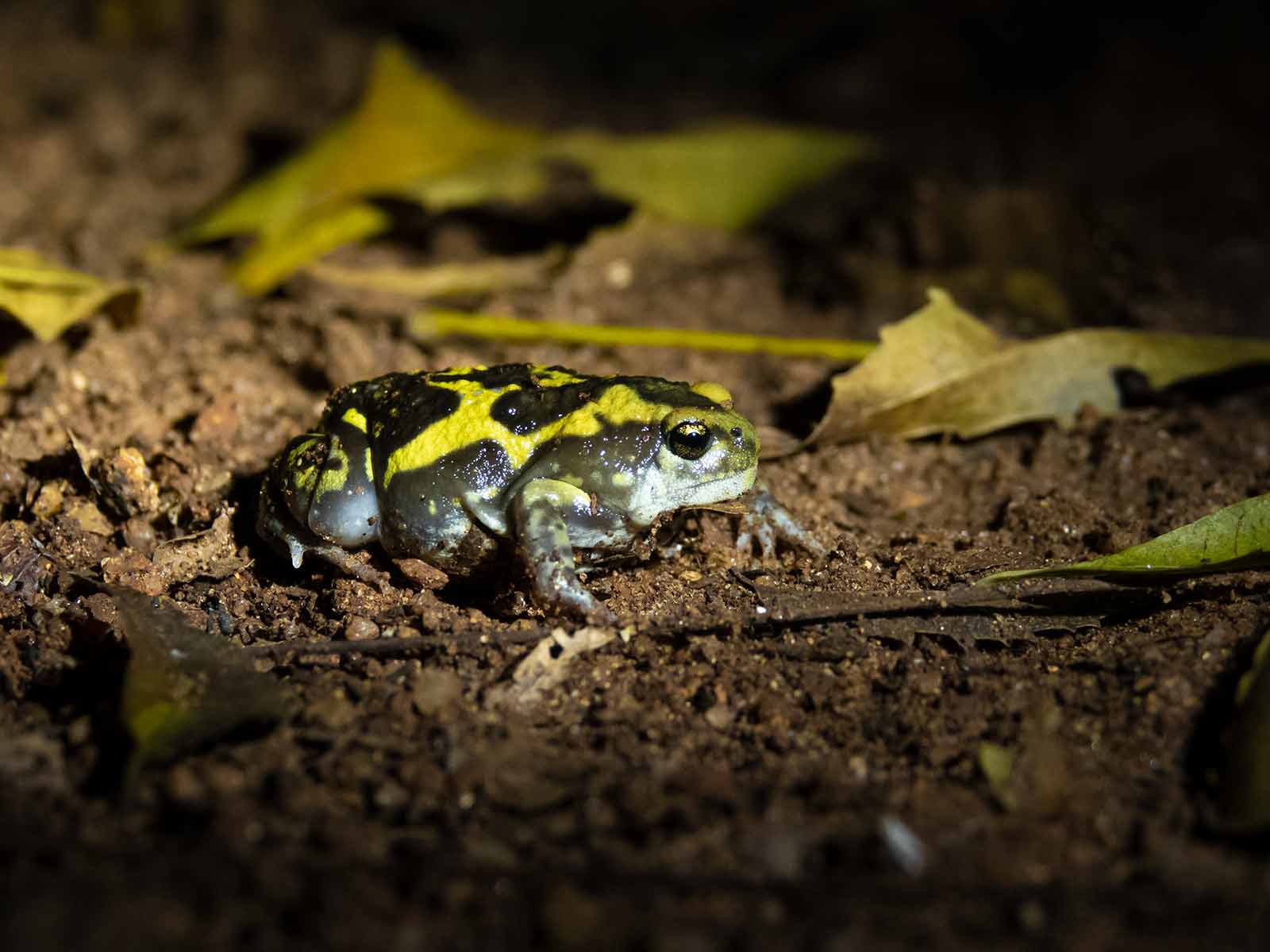
What made this sighting even more special was the fact that adults of the Marbled balloon frog are typically only visible during the summer monsoon season, as they bury themselves underground at other times. So, it was a surprise to find one out in the open, especially in such a dry habitat with no signs of rain. Nonetheless, I was overjoyed to have this unique opportunity to see the frog.
Despite our visit to Alwarkurichi being an unplanned adventure, it turned out to be an incredibly memorable experience.